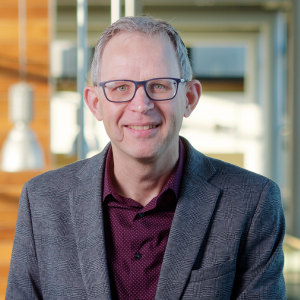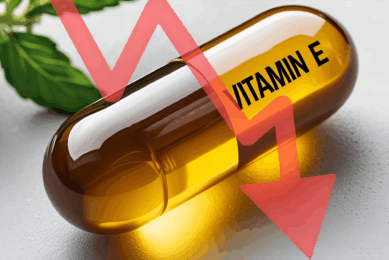Feed will only get more important in the future

Livestock and poultry producers worldwide are aiming to meet a growing animal protein demand. Themes like sustainability, animal health, welfare, profitability and proper feeding are interrelated, explains Prof Dr Leo den Hartog at Wageningen University.
By Vincent ter Beek
In the future, livestock production will be about innovation, efficiency and sustainability – and the concept of animal health plays an important role in this, states Professor Dr Leo den Hartog. Part-time lecturer at Wageningen University, the Netherlands, Den Hartog is also director of R&D and Quality Affairs at Nutreco. In this unique position, he is capable of offering views and perspectives from the industry first hand to the academic world – and be on top of progress for the propulsion of knowledge.
He addressed the theme of interrelation of feed, animal health and animal welfare at a recent congress of the European Feed Manufacturers’ Federation (Fefac). Den Hartog pointed out that there is still a world to win in achieving more efficiency in livestock production – and he will continue to remind the world of these opportunities.
The improvement can be achieved in an interesting interplay between feeding, animal health and animal welfare. Den Hartog: “In the beginning of professional swine production there was only one type of feed, for lactating and for gestating sows. After that – lactating and gestating diets entered the market. Now we are at the stage of diversifying between different stages of gestation and lactation – and different starter feeds. It’s this development that will continue as knowledge is constantly growing on a detailed level. Researchers of Nutreco R&D have for instance applied pyrosequencing, a technology with which it is possible to learn more about the effects of nutrition on the intestinal microbiota population – or in other words, what happens inside the gut?”
He continues, “In the past, we had to obtain evidence by answering questions like: Does an animal grow? Does it suffer from diarrhoea? Now we start to know what is happening inside. This leads to innovations that help farmers support the animal health.”
Animal health
When speaking of ‘animal health’ and ‘animal welfare’, Den Hartog is mostly talking about ‘gut health’. Gut health plays a pivotal role, as this is where nutrition and the intestinal morphology interact. Usage of nutrients is dependent on the colonisation of pathogens and a well-functioning immune system, which can be influenced by nutrition. Nutrient utilisation and the intestinal health status together determine the absorption of nutrients – and thus the animal performance. Den Hartog says, “Animals with a high health status have different feed requirements than those with an impaired health.”
He points out that there are many ways nutrition influences animal health. Feeding too little of each essential ingredient can lead to situations of deficiency – feeding too much, however, can lead to toxicity. Both situations ought to be avoided and an optimum level needs to be found but this is easier said than done.
Roughly between 1975 until 2010 in the Netherlands, average milk production per cow grew by more than 65%, just as the number of piglets per sow raised; egg production per hen increased by over 45% and body weight gain of broilers rose at least 25%. Piglet feed conversion ratio improved 20% – with a simultaneous reduction of phosphorus, nitrogen and ammonia emissions per ha of 50%. Another achievement was reduction of fishmeal and fish oil in fish feed of over 40%.
Animal production efficiency anno 2013 has not reached the zenith of development yet. Nutrient digestibility and utilisation are still relatively low; genetic potential is only partly utilised and perhaps best proof of this statement is given by the fact that there is a huge variation among farms and between animals when the same feed is applied. He quoted from a Dutch study where pigs on 14 different farms were observed to have varying degrees of digestibility of organic matter. In pigs of 40 kg, the digestibility varied between 77% and 84%, and between 78% and 86% for pigs of 70 kg.
In emissions, the development has not come to a standstill either, Den Hartog continues to say. Emissions per kg edible protein are depending on the animal performance – in other words, the better animals perform, the lower their emissions. This is particularly important for ruminant, as methane emissions are especially high in cattle, see Figure 1.
Antibiotics form an interesting topic in this discussion. Figure 2 shows the usage of antibiotics in this context. In the Netherlands, the usage of antibiotics has been targeted at various stages of the feed to food chain. Not only as antimicrobial growth promoters antibiotics are unwanted but there is a policy to reduce the dependence of the livestock industry on antibiotics altogether. In 2012, total kg of active substance in the Netherlands has halved compared to 2009. Den Hartog says, “By improving management, the use of antibiotics in animal production can be reduced. There has been a considerable attention on this matter and the authorities are right on top of it.”
Nutrition
In order to achieve such improvement, nutrition plays a key role. For instance, components of a healthy pig diet could and often should:
- Contain low levels of fermentable protein;
- Contain natural functional proteins and peptides;
- Be balanced in fibre composition
- Be well fortified with micro-nutrients related to immune function
- Have a low buffering capacity
- Have low levels of anti-nutritional factors
- Be made using optimised grinding and pelleting
- Be liquid and fermented
- Be palatable
Nutrition can replace antibiotics, Den Hartog says. As bactericidal ingredients he touches on minerals like zinc and copper, but also organic acids, medium-chain fatty acids (MCFAs), bacteriocins, bacteriophages and etheric oils. As ecological ingredients there are gut flora modulators like probiotics, prebiotics and enzymes – and gut integrity and morphology enhancers like glutamine, xylanases and butyrate. Further he speaks of immunological ingredients – those that are stimulating e.g. beta-glucans and vitamin E, and those that are inhibiting, like omega-3 fatty acids and mannanases.
Consistency however is a problem, while antimicrobial growth promoters are very consistent to levels which are not often reached by alternatives. Less is known about the action of various ingredients hence more research is required. In addition, different conditions may result in different interventions, which can be more successful when used in combinations. In Nutreco R&D this has been a research topic for many years. The research efforts have resulted in nutritional solutions that support gut health and improve production efficiency.
Breakthroughs in genomics, micro systems and nanotechnology as well as in information and communication technologies help to build up the knowledge around these themes. For that reason, Den Hartog says, it is necessary for the feed industry, for authorities and for research institutes and universities, to continue to strive for cooperation.
Future
Different countries are in different stages of development and may have different priorities. To sustainably reach the goal of feeding the growing world population, it is important to share knowledge globally and to apply solutions locally. Den Hartog says, “Choosing the right ingredients, raw materials and micro-ingredients will only become more important. It is fair and reasonable to say that nutrition will get even more important in the future.”
Last but not least will this all be sufficient to meet the world population demands by 2050, when some say 9.2 billion people will populate planet Earth? Den Hartog says that livestock numbers will grow globally, adding: “On the condition that production will be sustainable, the growth potential still available in global livestock industry will strongly contribute to feeding the world population by in 2050. In other words, when producing with high efficiency, causing emissions per output unit, meat, milk or eggs – not to rise or in certain cases even drop.”
Biography
Prof Dr Leo den Hartog became in 2001, director of R&D and Quality Affairs at Nutreco and part time professor at Wageningen University. He graduated in Animal Sciences at Wageningen University, in 1978, where he also obtained his PhD 1984 on the relation between nutrition and fertility in gilts and sows.
In 1989 he received the Henneberg Lehmann award from the University of Göttingen in Germany. In 1999 he got an honorary PhD from the University of Kaposvar in Hungary. His broad experience in animal production is reflected in over 450 scientific and applied articles and seven books as author or co-author. He gave more than 500 lectures in over 35 different countries . He has, on five occassions, chaired trade missions for the Netherlands Ministry of Agriculture, Nature and Food Quality.











